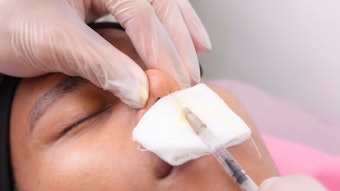
Using high-resolution ultrasound imaging and 3D surface scanning, researchers Katherine Goldie, MD, et al, were able to validate tissue integration and six-month volume retention following the use of a Cohesive Polydensified Matrix hyaluronic acid-based soft tissue filler (CPM-HA) for lip enhancement.
Related: Achieving Correct Proportions with HA Filler-based Lip Enhancement
For their study, published in the Journal of Drugs in Dermatology (September 2021) , the authors treated 16 subjects (mean age, 33.2 years) for lip contouring and volumization with CPM-HA lip fillers using a 30G needle and retrograde microthreading. The total injected volume was 0.8-1.2 mL.
They used high-resolution ultrasound (US) imaging, 3D surface scanning and Global Aesthetic Improvement Scale (GAIS) assessments at baseline and one, three and six post-injection to define the anatomy, positioning and longevity of the filler and patient satisfaction with the treatment.
Related: Researchers Map Location of the Labial Arteries for Safer Lip Augmentation
US measurements revealed an increased skin-orbicularis oris muscle distance up to one month post-injection after which measurements returned to baseline values. US imaging also revealed complete product integration into the surrounding tissue at three months. At six months post treatment, increased dry mucosa thickness (vermilion body) remained and 70% of patients (based on GAIS scores) continued to experience visible lip improvements.
The 3D analyses revealed significantly increased total lip surface area at three months with increased Cupid’s bow distance, philtral height and anterior upper lip projection.











